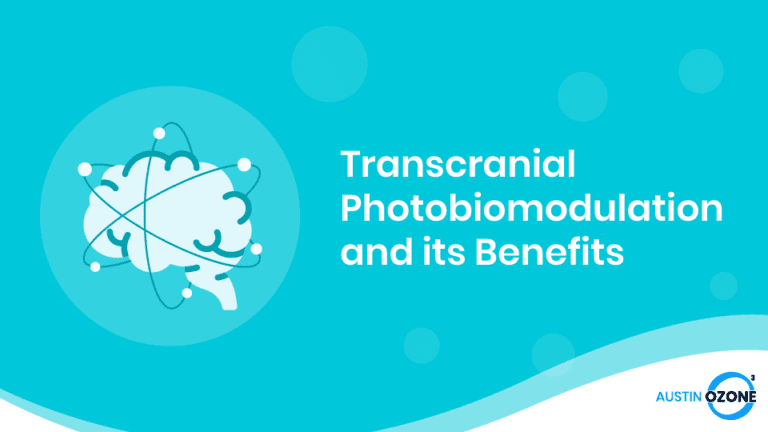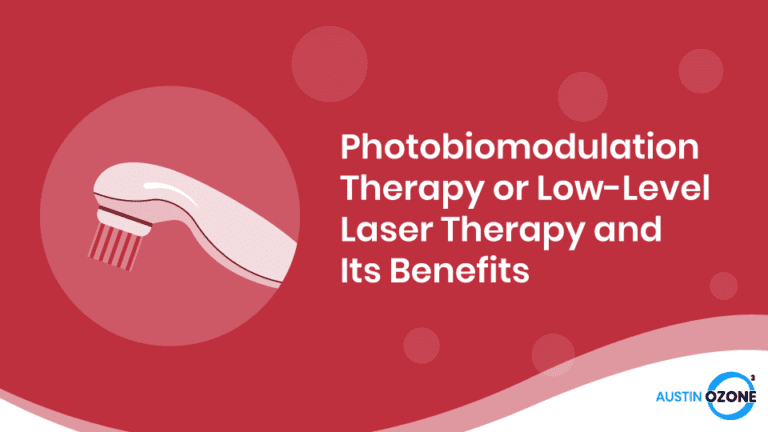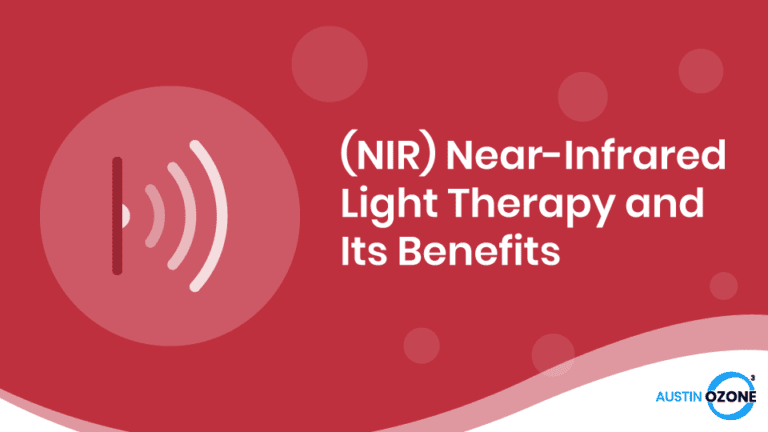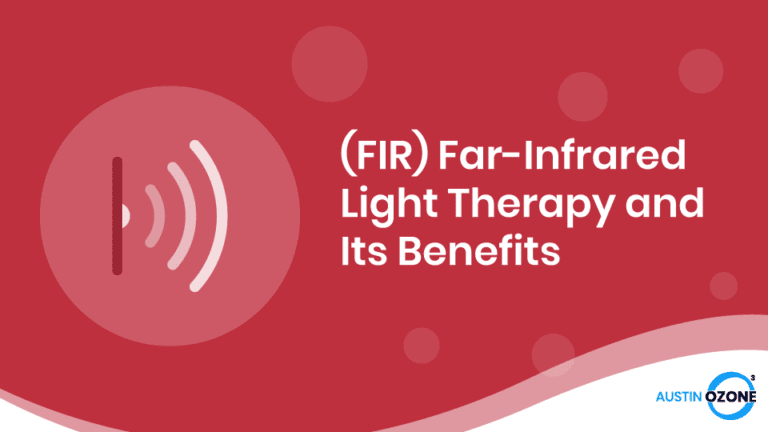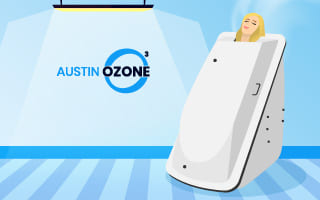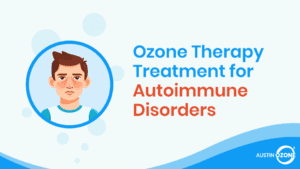It is well known that even small doses of sunlight provide many health benefits8. Sunlight can be broken down into three basic components: visible light, ultraviolet light, and infrared radiation.
Because of their positive effects on the human body, these three light wavelengths are extensively studied by many experts in the field of medical science in hopes of replicating the sunlight’s health benefits in a controlled environment.
What is Blue Light?
Blue light17 is part of the visible light spectrum – one that is the closest to ultraviolet light. Since it has the shortest wavelength among all visible lights, it has the highest energy and can therefore penetrate the skin deeper. On its own, blue light can boost attention, enhance reaction times, and improve the mood of those exposed to it.
The use of blue light is one of the foundations of phototherapy, a form of medical treatment that involves patients’ exposure to sources of light to treat specific conditions. It is mainly used to treat jaundice and hyperbilirubinemia in newborns, various skin disorders in adults, mood and sleep disorders, some cancers and pre-cancers, and skin-related cancer symptoms.
What is Blue Light Therapy?
Blue light therapy is a medical treatment where the light source is placed directly on the areas to be treated. Some clinics use it in combination with photosynthesizing drugs as a form of photodynamic therapy. It is non-invasive, less toxic, and provides immediate relief.
The treatment takes advantage of the body’s response17 by controlling the time and the kind of exposure it has to blue light. For example, when adequate blue light enters the eye, it can start a chain reaction that generates a hormonal response from the hypothalamus. This in turn helps lift the mood and prevents depression.
Blue light therapy is a medical treatment where the light source is placed directly on the areas to be treated.
Blue light therapy is a relatively quick process5. The patient is escorted to a darkened room and is made to wear protective goggles. The doctor then administers the blue light treatment on the target area for 15 to 90 minutes4, depending on the severity and size of the affected area. If photosynthesizing drugs are used, the patient would be advised to let the skin absorb the medication for a couple of hours or days before going in for therapy and to avoid bright lights (i.e. sunlight) during that period of time.
Introduction Video About Light Therapy
Positive Effects of Blue Light Therapy on Various Medical Conditions
The health benefits of blue light therapy can only be enjoyed with repeated use. It takes around four or more treatments with regular maintenance to feel the full positive effects. Blue light therapy is mainly used to treat the following health conditions:
Newborn Jaundice
Jaundice is characterized by the yellowing of the skin and eyes (mainly the white part) in newborn babies. Symptoms usually develop 2 to 3 days after birth.
It is a common condition among newborns because they have a high amount of red blood cells that are frequently broken down to produce bilirubin17, a yellow substance that carries oxygen in the blood. When the baby reaches two weeks old, their liver should be able to process bilirubin, thereby correcting jaundice.
While jaundice is mostly harmless, parents still need to consult a doctor to determine whether their newborn needs treatment from it or not. Treatment is recommended if the tests show a high amount of bilirubin in the baby’s blood, as it can potentially damage the baby’s brain.
Blue light therapy helps break down bilirubin into simpler products that can be easily eliminated by the body through the process of photooxidation. Photooxidation increases the oxygen in the blood so that the bilirubin can be easily dissolved in water and processed by the baby’s liver.
In this treatment, the baby is laid under the blue light source, with eyes covered, for 3 to 4 hours. This procedure is repeated multiple times until the baby’s bilirubin levels go back to normal.
Seasonal Affective Depression (SAD)
According to the Diagnostic Manual of Mental Disorders (DSM-5), SAD is a form of depression that normally occurs every winter or fall when there is less sunlight. Those who have SAD generally improve with the arrival of spring.
Contrary to popular belief, SAD is not the same as the ‘winter blues’. SAD is a diagnosable disorder, triggered by less sunlight and shorter daylight hours, causing a biochemical imbalance in the brain.
The symptoms of SAD are very similar to depression. They include feelings of sadness, loss of energy and interest, changes in appetite, difficulty in concentrating or thinking, and thoughts of death.
Although the symptoms can go away on their own with season change, blue light therapy (in combination with medications and psychotherapy) can help a person with SAD improve a lot faster.
The therapy requires exposure to the light source for about 20 minutes within the first hour of waking every day. Most people see some improvements after three weeks of continuous therapy.
Doctors usually prescribe blue light therapy during early fall and to be continued all throughout the winter to prevent the onset of symptoms.
Acne
Acne12 is a chronic skin condition that causes blemishes or lesions on the face, shoulders, neck, back, chest, and upper arms. It commonly occurs in pre-pubescent and pubescent teens where the sebaceous gland is hyperactive.
The glands produce sebum, an oily liquid that carries dead skin cells to the skin surface through the hair follicle. The swelling of pimples starts when the hair follicle gets blocked by the dirt, sebum, and skin cells and get infected by the bacteria, Propionibacterium acnes10.
While acne is not dangerous to one’s health, it can leave scars which can decrease a person’s overall confidence.
Acne can be treated in many ways. One is by using blue light therapy to kill the pimple-causing bacteria that lives on the skin. The advantage of using blue light instead of the usual antibiotics is that there is less chance that the bacteria can build resistance12 against the blue light.
Blue light therapy can be done using at-home devices. The patient must be exposed to blue light twice a day for 30 to 60 minutes within 4 to 5 weeks for effective acne treatment. This procedure is proven to improve mild to moderate acne.
Other Benefits
Although more research is needed, there is evidence that blue light therapy may also be used in treating other medical conditions such as psoriasis, atopic dermatitis, infectious keratitis18, actinic keratoses15 and eczema.
Some studies also show the efficacy of blue light therapy against bacterial infection3, although some studies refute these claims. Another study2 shows the effectiveness of blue light in increasing a patient’s alertness to visual stimuli.
While these studies show positive results, it is important to note that they need to include more clinical trials to support their claims.
Schedule a Blue Light Therapy Session Today!
Risks of Blue Llght Therapy
Skin Irritation
When properly administered, blue light therapy does not pose serious adverse effects. However, some might experience dryness, redness, and swelling of the skin on initial use. Some may experience tender, blistered, or peeling skin immediately following the treatment. These symptoms often resolve on their own after 7 to 14 days.Eye Damage
It should be noted that continuous exposure to blue light can lead to serious eye damage like cataract, dry-eye, and macular degeneration. This is why it is important to wear proper eye protection when undergoing blue light therapy.Porphyria
People who are suffering from a rare medical condition called porphyria should avoid blue light therapy as it can trigger an attack that is accompanied by vomiting, abdominal pains, and mental symptoms.
If you experience any of these symptoms, it would be best to seek immediate medical attention.
As with other medications, excess exposure to high intensity blue light can be toxic to your health. However, it should not pose a problem with proper use.
Summary
Blue light therapy is a non-invasive and painless procedure that can treat several different medical conditions. While there are risks of side-effects, these are often minimal and do not pose serious health risks in the long run. The procedure can be done in an outpatient clinic or at home.
It offers a fast, effective, and relatively cheap solution to your medical concerns. Just remember to consult your physician before trying blue light therapy.
Schedule an Appointment Today
References
- Aedit. (n.d.). Everything you need to know about the benefits of light therapy. Retrieved from Aedit: https://aedit.com/aedition/everything-you-need-to-know-about-the-benefits-of-light-therapy
- Bajaj, S., Vanuk, J., Smith, R., Dailey, N., & Killgore, W. (2017). Blue-light therapy following mild traumatic brain injury: Effects on white matter water diffusion in the brain. Frontiers in Neurology, 8, 616. doi: 10.3389/fneur.2017.00616
- Cabral, J., & Ag, R. (2019, May). Blue light disinfection in hospital infection control: Advantages, drawbacks, and pitfalls. Antibiotics (Basel), 8(2), 58. doi: 10.3390/antibiotics8020058.
- Cobb, C. (2017, August 4). Blue light therapy. Retrieved from https://www.healthline.com/health/blue-light-therapy
- Forefront Dermatology. (n.d.). Blue light therapy treatment options. Retrieved from https://forefrontdermatology.com/services/blue-light-therapy-treatment/
- Garza, Z., Born, M., Hilbers, P., van Riel, N., & Liebman, J. (2018). Visible blue light therapy: molecular mechanisms and therapeutic opportunities. Current Medicinal Chemistry, 25(40), 5564-5577. doi: 10.2174/0929867324666170727112206
- Gold, M., Andriessen, A., Biron, J., & Andriessen, H. (2009). Clinical efficacy of self-applied blue light therapy for mild-to-moderate facial acne. The Journal of Clinical and Aesthetic Dermatology, 2(3), 44-50.
- Honigsmann, H. (2013). History of phototherapy in dermatology. Photochem Photobiol Sci, 12(1), 16-21. doi: 10.1039/c2pp25120e
- Hull Dermatology & Aesthetics. (2014). Photodynamic therapy / “blue light”. Retrieved from https://www.hullderm.com/dermatology/photodynamic-therapy-blue-light/
- Legg, T. (2017, September 3). The benefits and side effects of blue light treatment for acne. Retrieved from https://www.medicalnewstoday.com/articles/319254
- Raikes, A., Dailey, N., Shane, B., Forbeck, B., Alkozei, A., & WDS, K. (2020). Daily morning blue light therapy improves daytime sleepiness, sleep quality, and quality of life following a mild traumatic brain injury. The Journal of Head Trauma Rehabilitation, 35(5),E405-E421. doi: 10.1097/HTR.0000000000000579
- Scott, A., Stehlik, P., Clark, J., Zhang, D., Yang, Z., Hoffmann, T., Del Mar, C. & Glasziou, P. (2019). Blue-light therapy for acne vulgaris: A systematic review and meta-analysis. The Annals of Family Medicine, 17(6), 545-553. doi: 10.1370/afm.2445
- Siperstein Dermatology Group. (2018, February 23). The benefits of blue light therapy. Retrieved from https://www.sipderm.com/benefits-blue-light-therapy/
- Smilowska, K., van Wamelen, D., Schoutens, M., Meinders, M., & Bloem, B. (2019). Blue light therapy glasses in parkinson’s disease: Patients’ experience. Parkinson’s Disease, 2019, Article ID 1906271. https://doi.org/10.1155/2019/1906271
- University of Iowa Hospitals & Clinics. (n.d.). Blue-light therapy warding off skin cancer. Retrieved from https://uihc.org/health-topics/blue-light-therapy-warding-skin-cancer
- Wang, T., Dong, J., Yin, H., & Zhang, G. (2020). Blue light therapy to treat candida vaginitis with comparisons of three wavelengths: An in vitro study. Lasers in Medical Science, 35, 1329-1339.
- Yazdi, P. (2020, July 31). 7 health benefits of blue light therapy + side effects. Retrieved from https://selfhacked.com/blog/blue-light-therapy-benefits/
- Zhu, H., Kochevar, I., Behlau, I., Zhao, J., Wang, F., Wang, Y., Sun, X., Hamblin, M. R., & Dai, T. (2017). Antimicrobial blue light therapy for infectious keratitis: ex vivo and in vivo studies. Investigative Ophthalmology & Visual Science, 58(1), 586-593. doi: 10.1167/iovs.16-20272

